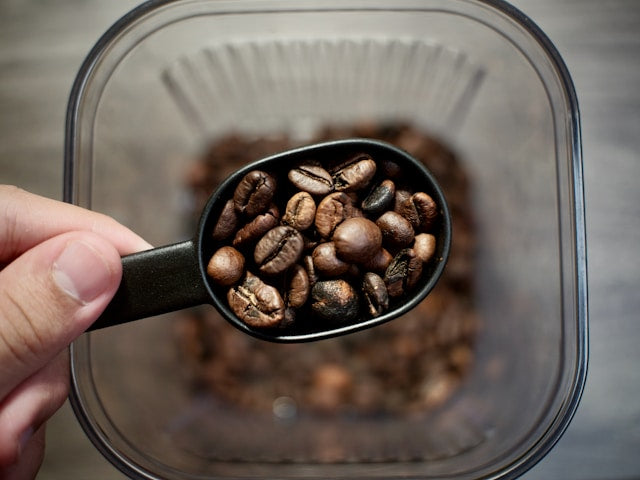What are Robusta coffee beans and what makes them different to Arabica?

When coffee aficionados gather, the debate between Robusta and Arabica beans often has mixed feelings. While Arabica is typically heralded for its smooth, complex flavor profiles, Robusta coffee beans boast their own distinctive set of qualities that merit appreciation. As one of our founders is Vietnamese, you may see that we offer many blends and origins that feature specialty Robusta and Fine robusta. For us, we think this Robusta has the potential to be some of the most flavorful coffees in the world. So today we wanted to share a deep dive into the world of the Robusta varietal, exploring its rich history, origins, unique characteristics compared to Arabica, its notable caffeine content, flavor nuances, roasting processes, and its evolving perception in the coffee industry.
The History and Origins of Robusta Coffee Beans
Robusta coffee, scientifically known as Coffea canephora, is a species of coffee that originated in sub-Saharan Africa. It was first discovered in the Congo, which remains a significant producer. Unlike its cousin, Arabica, Robusta thrives at lower altitudes and is notably resistant to diseases, thanks to its robust nature, hence the name. Today, Robusta is cultivated extensively in Vietnam, Brazil, Indonesia, and Uganda, where it supports local economies and meets global demand, particularly for instant coffee production.
Robusta vs. Arabica and Other Coffee Beans
Robusta and Arabica are the two most commercially important coffee species. However, Robusta is often considered the underdog due to its sometimes harsher and more bitter flavors. It grows at lower altitudes, generally between sea level and 800 meters, compared to Arabica, which prefers the cooler climates of higher altitudes. Botanically, Robusta beans are rounder and smaller than Arabica and contain almost double the amount of caffeine, which helps protect the plants against pests.

In addition to Robusta and Arabica, species like Coffea liberica and Coffea excelsa also find their niche in regional markets but are less common on the global stage. These species offer unique flavors and are sometimes sought after for specialty blends.
The Caffeine Content of Robusta Beans
One of the most significant distinctions of Robusta is its caffeine content, which is about 2.7% of its mass, nearly double that of Arabica beans. This high caffeine content imparts a deeper, often described as harsher, bitterness to the coffee, which can be an acquired taste. However, this makes Robusta beans particularly prized in blends for espresso, where a strong, bold coffee is desirable and necessary for cutting through the milk in lattes and cappuccinos.
Taste and Flavor Profiles of Robusta
Robusta beans are known for their powerful flavor profile. They typically exhibit earthy, nutty, and grain-like qualities, with a heavy body that can sometimes verge on woody or chocolatey. Unlike Arabica, the flavor of Robusta is less likely to feature fruity or floral notes, leaning more towards raw, peaty, and dark chocolate nuances. This bold flavor profile makes Robusta less popular as a single-origin coffee but invaluable in creating espresso blends where strength and crema—the creamy layer that forms on top of an espresso—are enhanced.
The Emergence of Fine and Specialty Robusta
In recent years, the coffee industry has seen the emergence of "Fine Robusta" and "Specialty Robusta." These terms refer to Robusta beans that are cultivated and processed with the same meticulous care traditionally reserved for high-quality Arabica beans. Fine and Specialty Robusta beans often undergo rigorous selection and enhanced cultivation techniques, which result in a cleaner, more refined taste that can rival, and sometimes exceed, the flavor scores of Arabica beans. This new category of Robusta is changing perceptions and gaining popularity among coffee connoisseurs who appreciate its unique flavor and robust profile.
Roasting Robusta Beans vs. Arabica
Roasting Robusta beans is an art in itself. Due to their denser properties and higher caffeine content, Robusta beans require a different approach to roasting compared to Arabica. Roasters might opt for a lighter roast to avoid exacerbating the natural bitterness of the beans, aiming to highlight the smoother, richer undertones. The roast profile significantly affects the final taste, and mastering this can turn a batch of Robusta beans into a desirable component for robust blends.
Perception of Robusta in the Coffee Industry
Historically, Robusta has been viewed as inferior to Arabica in terms of quality and flavor. However, this perception is gradually changing. The coffee industry is starting to appreciate the diversity Robusta beans bring to the table, particularly in the context of sustainability and climate change. Robusta's resilience to warmer climates and diseases makes it a vital species for future coffee production, potentially offsetting some of the risks associated with global warming.
Moreover, the specialty coffee segment is experimenting more with high-quality, carefully sourced Robusta beans to create premium products that defy traditional biases. Specialty Robusta is slowly carving a niche in gourmet coffee markets around the world, appreciated for its unique qualities and contribution to complex and satisfying coffee blends.

Da Lat Vietnam where our premium robusta and Fine Robusta beans we source directly from farmers.
Robusta coffee beans, with their distinct profile and deep, earthy flavors, are an essential part of the coffee industry’s fabric. From its humble origins in the forests of Africa to becoming a cornerstone of global coffee production, Robusta has proven its worth time and again. As we continue to explore and appreciate the diverse world of coffee, the story of Robusta serves as a reminder of the richness that different coffee species can offer. For those adventurous in palate, integrating Robusta into your coffee repertoire could unlock a new dimension of coffee enjoyment, redefining what a good brew can be.
Whether enjoyed as part of a vigorous espresso blend or as a single-origin for those who appreciate its straightforward boldness, Robusta is undoubtedly deserving of a more nuanced and appreciative understanding within the coffee community.





